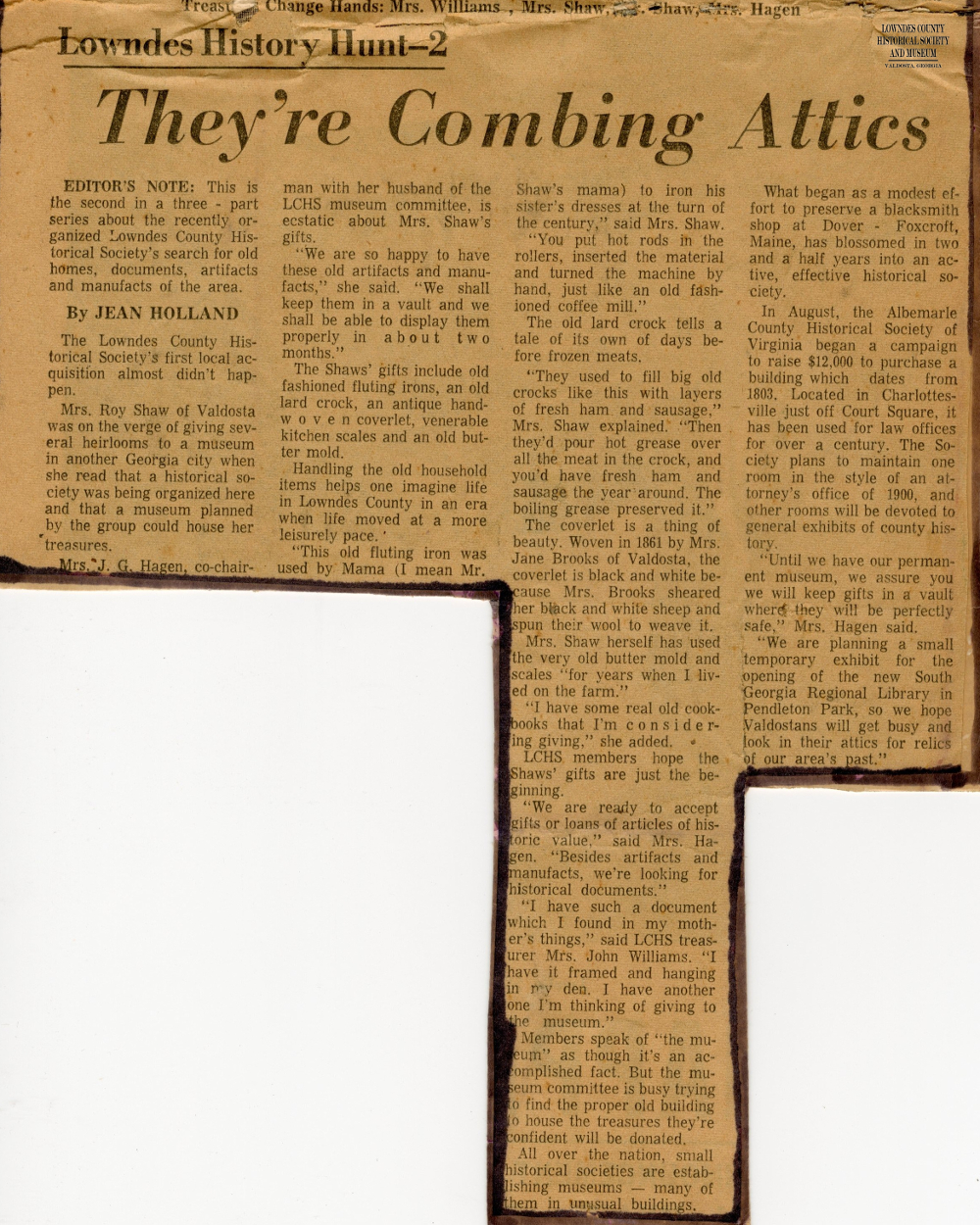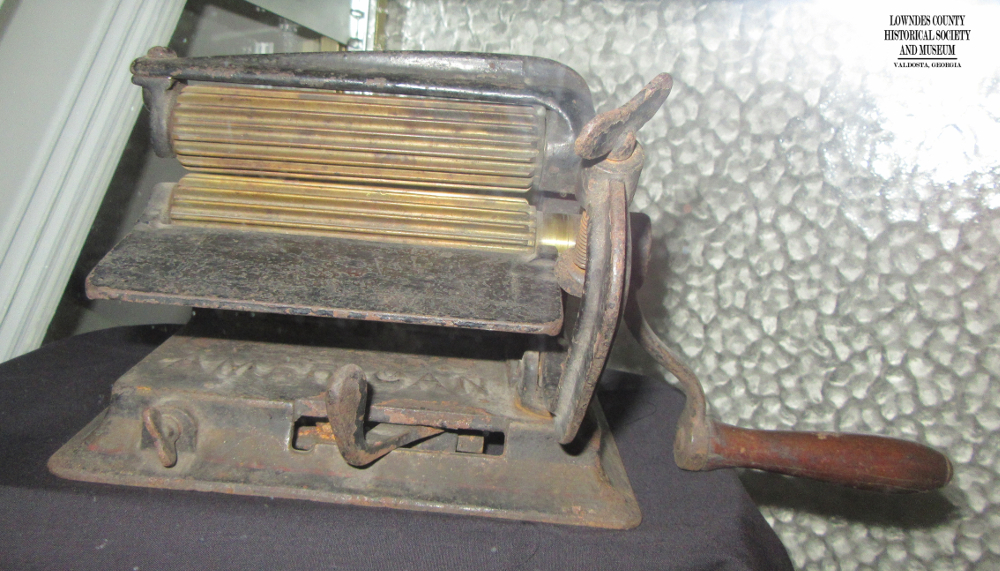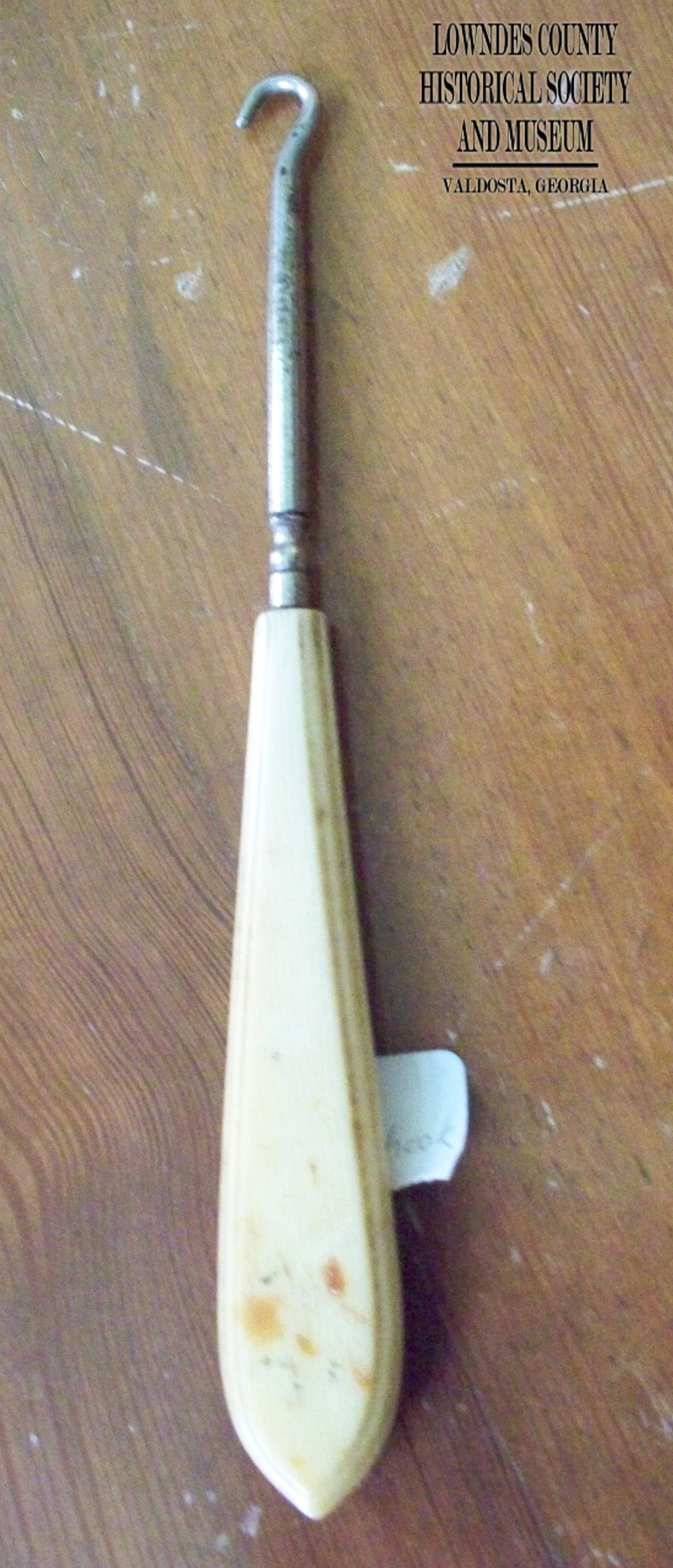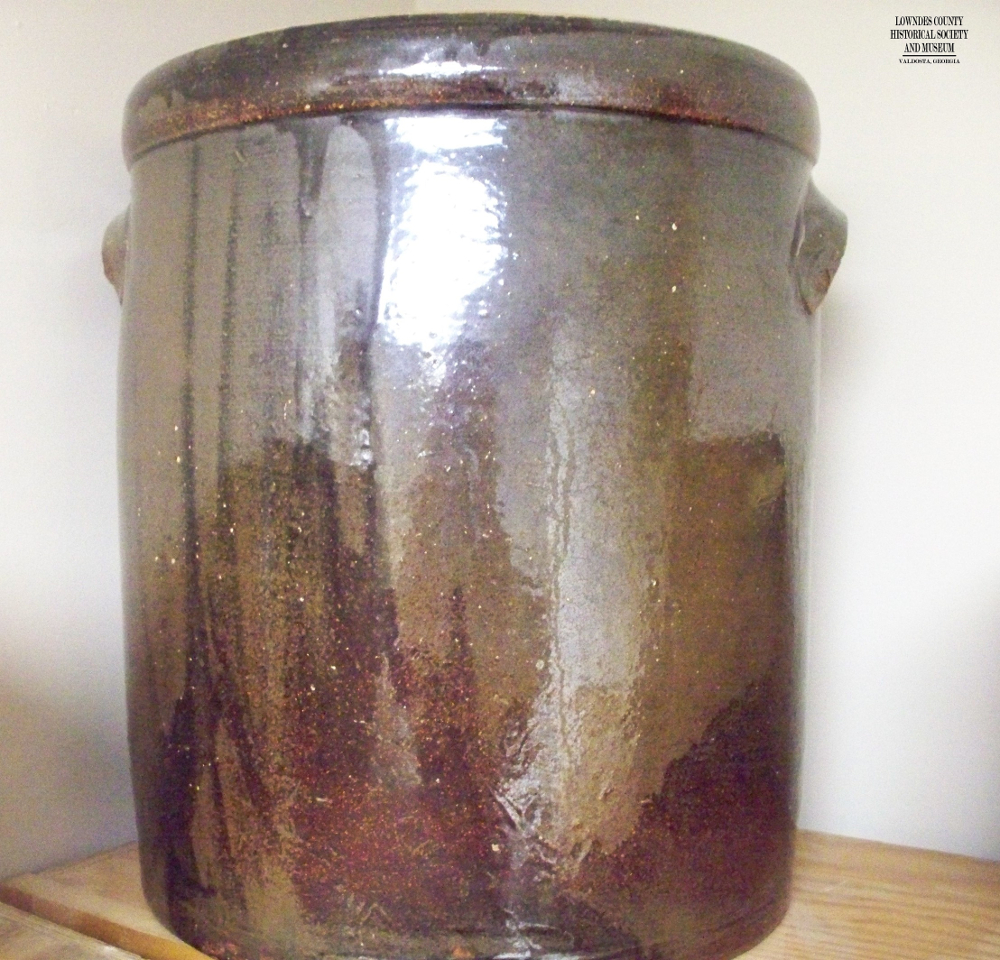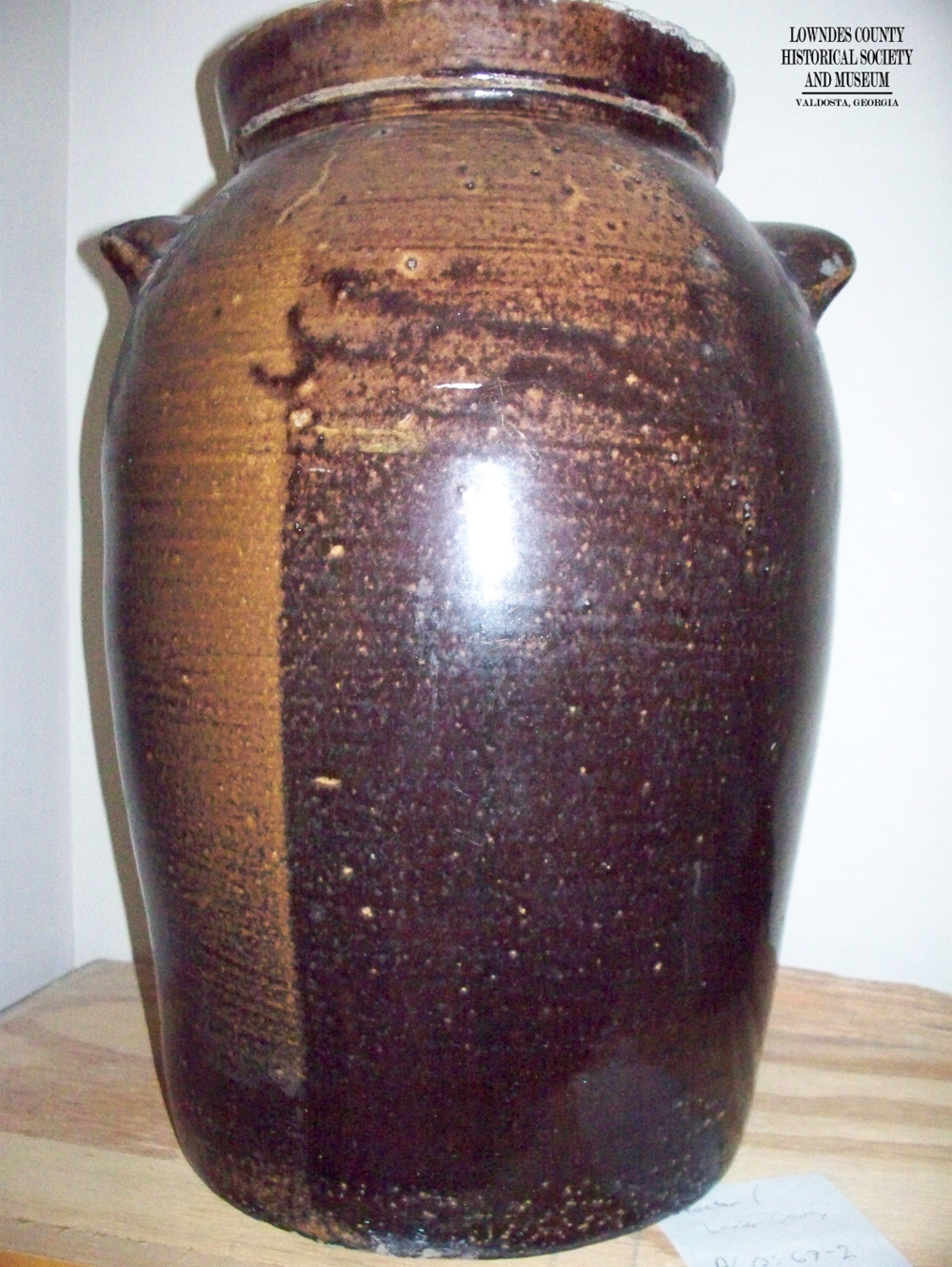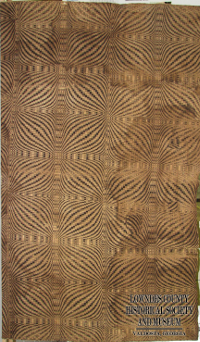On December 2017 the Lowndes County Historical Museum celebrated its golden anniversary opening with 50 Years- 50 Features Exhibits. The First Local Acquisition 1967: A Glimpse Into Lowndes County’s Past was featured and remains on display in the main building of the museum. This first local acquisition, given by the Roy Shaw family came after they had read about the museum forming. Since these items were used in Lowndes County, they decided to donate their items locally, forgoing their previous plan to contribute to another Georgia museum. On Friday November 17, 1967 the Valdosta Daily Times recorded the first local artifacts donated to the Lowndes County Historical Museum by the Shaws. Mrs. J.G. Hagan co-chairman of the LCHS committee was quoted in the article as saying, “We are so happy to have these old artifacts.” Today at the museum we are very pleased to have not only these wonderful first acquisitions but also feel very fortunate that so many have and still donate their family treasures in an effort to preserve the history of our area.
The items donated included the following:
Fluting Iron Shaw Collection 1967-02-02
A fluting iron was a common piece of laundry equipment. This particular model was an “American” manufactured by the American Machine Company in Philadelphia Pat Nov. 2, 1875, July 3, 1877, Aug 19, 1879 reissued March 25, 1885 as marked on the bottom. Mrs. Shaw explained in the newspaper article “This old fluting iron was used by Mama (I mean Mr. Shaw’s mama) to iron his sister’s dresses at the turn of the century.” “You put the hot rods in the rollers, inserted the material and turned the machine by hand…” As a result the material coming out would be uniformly ruffled or “fluted” until the next wash. The machine was mostly used for collars, cuffs and ruffles which were detachable for more frequent washing and was most popular between 1860-1880.
Button Hook Shaw Collection 1967-02-05 TB
Button hooks were a necessity in dressing and were sometimes found in matching sets with manicure items. This simple tool aided in fastening the many tiny buttons of men’s, woman’s, and children’s boots and as a means of closure before eyelet and laces came to style. They could also assist in buttoning opera gloves which reached all the way up the arm and often fashioned covered or peal buttons the entire length. Jackets, waistcoats, dresses and even corsets also contained lots of tiny buttons. Hooks were made from steel or silver some with handles made from wood, silver, brass, ivory, glass, or celluloid and could be quite elaborately decorative with portraits in them. This particular model appears to be made from celluloid which would date it after 1870.
Large Crocks Shaw Collection 1967-02-01
Large crocks like this one were a part of everyday life. In the absence of frozen meats Mrs. Shaw explained, “they use to fill big old crocks like this with layers of fresh ham and sausage. Then they’d pour hot grease over all the meat in the crock, and you’d have fresh ham and sausage the year around. The boiling grease preserved it.” Sometimes pickling salt and brown sugar was used to preserve as an alternative to grease. This particular piece has a hand drawn number on the side as opposed to a stamped number.
Crock With Lid Shaw Collection 1967-02-07
This large crock is listed as the pottery butter churn; however, this one has a solid lid. Crocks with this same shape and solid lids were used for food preservative and storage. Therefore, this might have been used for either purpose. This is a fine example of Timmerman pottery, one of several examples the museum now houses. For more information on local pottery, see the booklet The Pottery of Stockton: South Georgia’s Only Jugtown by James R Cormany. (The book is reference and was not part of this acquisition.)
Man’s Wallet Shaw Collection 1967-02-07
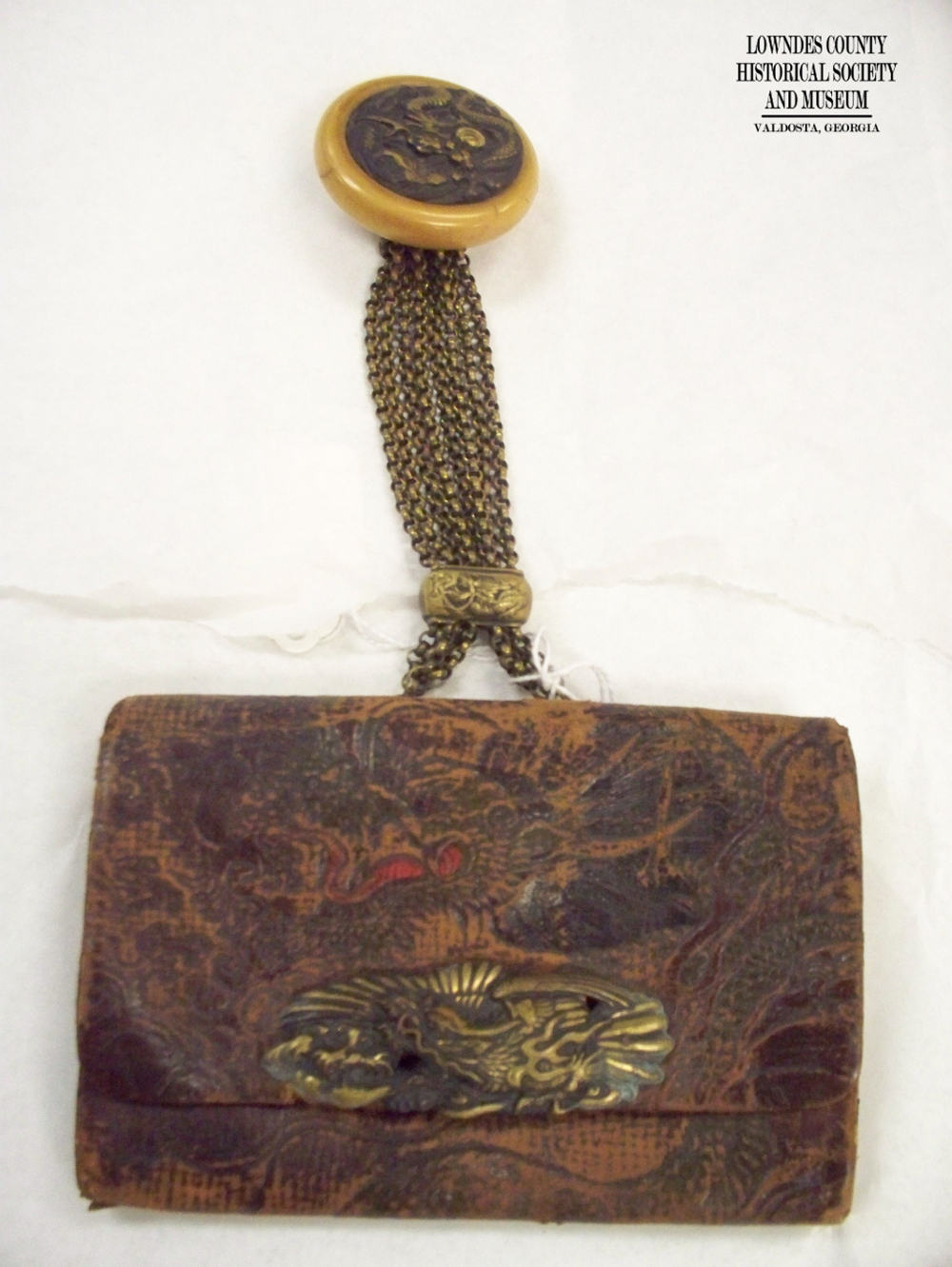 This interesting wallet was given to the museum by the Shaws but was noted on the acquisition as belonging to G.C. Spurlin. George Clarence Spurlin was born July 10, 1886 and died September 22, 1934 in Fulton County, Georgia, where he was sent for treatment. He is buried in Sunset Cemetery in an unmarked slab in Section A 203, along with sons George Clarence Spurlin, Jr.(died 24 Nov 1932) and Robert Earle Spurlin.
This interesting wallet was given to the museum by the Shaws but was noted on the acquisition as belonging to G.C. Spurlin. George Clarence Spurlin was born July 10, 1886 and died September 22, 1934 in Fulton County, Georgia, where he was sent for treatment. He is buried in Sunset Cemetery in an unmarked slab in Section A 203, along with sons George Clarence Spurlin, Jr.(died 24 Nov 1932) and Robert Earle Spurlin.
(27 Sep 1900-27 Jun1902.) Mr. Spurlin was an attorney serving a Solicitor General of the Southern Judicial Circuit. This wallet dates 1910-1930.
Apothecary Druggist Scales Shaw Collection 1967-02-08
These kitchen scales are not listed on the Shaw Acquisition but are mentioned in the newspaper article. This 19th Century Apothecary Druggist scale boasts an oak casing and a marble top. They are listed as kitchen scales in the newspaper article and could have been adapted for this purpose.
1860’s Coverlet Shaw Collection 1967-02 -03
Made by Jane Webb Smith
Size: 79 1/2″ X 96
Configuration: three pieces
Weaving width: 26 1/2 each
Epi: 40
Threads: Pattern handspun wool -natural color of sheep
Weaving Pattern: A bow knot pattern, draw down, threading recorded in the museum
1861
See more detailed information also on this item under our web page Quilts and Coverlets by clicking here valdostamuseum.com/collections/textiles/quilts-and-coverlets/
Butter Mold Shaw Collection 1967-02-09
Although the butter mold is not listed on the original acquisition, it is shown in the newspaper photo and thus was added to this display. A butter mold was a common item in many kitchens in the 1800’s. Butter was made at home, put into a mold for shaping, and then turned out onto a dish. This one has a decorative foot to stamp a design in the top of the butter.


